Birth of a chicken lady
When I was a child, my grandparents had a flock of white hens who were, for reasons still unknown, terrifying to me. Why was I afraid of them? My grandmother would occasionally send me to the hen house to collect eggs and I felt like I was walking down death row, there behind the wagon house, to face the firing squad.
The whole way there—maybe a sixty-second walk if I dawdled—I filled my own mind with the dread of sticking my hand under a hen to fish around for eggs and the possibility of her getting aggravated and pecking me. Maybe this came from listening to my daddy tell the story of a chicken not wanting to be pestered so she pecked at him, and he retaliated by grabbing her by the neck and flinging her across the coop, an egg coming out of her mid-flight. I was sure if that scenario occurred I would die right there in the straw and droppings.
If ten-year-old me only knew what the future held . . .
I used to read about “chicken ladies” and “chicken math” while rolling my eyes. I could see being a dog lady (I love dogs), and could maybe even understand how someone might become a cat lady (if you liked cats, which I don’t), but chickens? Come on. Flappy, beady-eyed, claw-footed little dinosaurs. What’s to like other than eggs and drumsticks?
Then my older son and daughter-in-love bought a house that came with two hens and a rooster. The hens didn’t lay and the rooster became my granddaughter’s pet, so I figured chickens couldn’t be that bad.
Then Amy, the daughter-in-love who lives near me, got a few chicks. Then some more. Chicken math took over and she had 27 (!) and I might have thought she was crazy but she was keeping half the church supplied with fresh eggs and that’s a pretty cool ministry. Sign me up.
By this time our herd of cattle was well established, and Ben and I were thinking about what other animals we could keep to increase our self-sufficiency a bit. Chickens were the natural next step, and I had a ready helper in Amy. She’s game for anything.
Then before we could put any kind of plan in place, a church family asked if we wanted their whole setup: a coop plus 8 already-laying hens and we jumped at the chance.
I’ve talked about that whole evolution before: how we nursed them back to health, got them used to the great outdoors, lost three to disease and one to a raccoon, let them free range then penned them back up. It’s been a long and winding year and we wound up with four healthy hens and a lot of knowledge. It reminds me of what the Roman governor Festus said to Paul: “Much learning doth make thee mad.”
So we had four, but with Ben around, that’s not enough to keep us in eggs. Then Ben and I lost our minds at the exact same time. The logical next step was raising chicks to increase our flock. How hard could it be? (Somebody shoot me.)
I asked Amy a jillion questions, made a homemade brooder by duct-taping two big boxes together, got a heat plate and borrowed a heat lamp, and set it all up in the basement. My plan was to get six chicks since I was new at this. That quickly morphed into eight or nine, then Amy said she wanted three so she could have an even thirty, and I wound up getting a dozen. But who cares? They’re so cuuuuuute!
At least I am smart enough to buy pullets.
You know what those are, right? Those are the little chicks that are guaranteed to be females. I could get unsexed chicks cheaper, but then you don’t know how many males and how many females you’ll wind up with, and that is a chance I am not interested in taking. I’ll take twelve pullets, please. All girls. They come home peeping in their little cardboard lunchbox and the cuteness is overwhelming. It’s enough to make my oxytocin flow again.
That lasted all of six hours until the first case of pasty butt presented itself, followed quickly by five or six more. Google was my best friend in those early days, and I learned that I could grind some chicken scratch and apparently that would get rid of the pasty mess (it did). In the meantime, have you ever cleaned poop off a chick’s tiny vent with wet Q-tips? You just don’t know a good time.
Fast forward one week.
Meanwhile, I’d been fighting with a broody hen for a few weeks, so I had the brilliant idea to let her sit on some wooden eggs for a few weeks, then in the dark of night, take the eggs out from under her and slip a couple of chicks underneath. I’d heard people say it would work and it would satisfy her need to be a mama.
So one afternoon I went to Tractor Supply to buy her two chicks—except you can’t buy just two, you have to buy four. Okay, fine. I’ll take four pullets. I’ll give the broody two and put the other two in with the week-old chicks in the brooder.
(Now we’re up to sixteen chicks. This is how chicken math works.)
So I slip my big black Jersey Giant a couple of Rhode Island Red chicks and she instantly becomes the best chicken mom on the planet. Fabulous. At least I don’t have to deal with those two.
Fast forward two more weeks.
What are these hideous, half-feathered creatures in my basement and where are the fluffy babies I brought home? Chicks grow astonishingly fast and I learned the hard way that this process creates a shocking amount of chick dander, otherwise known as “the white dust that covers every inch of your 1900-square-foot basement plus the lining of your lungs.” Chick raising is the most disgusting undertaking (other than cleaning pasty butts). Never do it indoors. Never.
Fast forward four more weeks.
Now I am desperately trying to figure out how I can get these monsters out of the house. They are big and trying to fly out of the brooder and they stink. The basement is filthy and I am coughing my brains out. (I don’t know if chicken dust is the reason, but I would find out soon that I have had pneumonia for several weeks. I’m blaming it on them. I have no photos of this season. I was just trying to survive.)
Amy takes pity and says she is coming over to clean the big coop (I have since moved the four Jersey Giants [plus the two babies] to the old coop to make room for the chicks in the big coop, which hasn’t been cleaned since last fall, thank you, deep bedding method) and get the chicks out of my house. She does all this while I stand around coughing up a lung and playing with grandbabies. Praise the Lord, the chicks are outside. Then she goes in the basement and starts vacuuming. I hit the daughter-in-law jackpot.
Over the next several weeks, Ben builds a beautiful run, we throw a big net over the top, and the now-eight-week-old chicks are happily outdoors for good. Praise the Lord and pass the sparkling apple juice.
But alas, my celebration is short-lived.
One morning, at the nine-week mark, I go outside to let all the chickens out of their respective coops. As I am working with the big girls, I hear a distinct but somewhat juvenile crowing coming from the chick coop.
As my four-year-old grandson Nathan says, “What the world?”
I straighten up and listen.
Uh-uh-uuuuuuh!
One of my guaranteed females is a little man, already finding his voice. If it weren’t so alarming (ha) it would be adorable. No worries, I think. I can rehome him. Surely someone wants a young, healthy rooster. (Shirley is wrong on this count.)
Fast forward a few more days.
I have been watching these chicks like a hawk to figure out who the rooster is, and I think I know. The all-white Americauna flies up and down the run like a fighter-pilot, dive-bombing other chicks, squaring up with them and fluffing out his neck feathers to look intimidating despite his small size. I snap a few photos and post them in my Facebook chicken group. Yes, they tell me, that is your roo. You can tell because Americauna roosters have a 3-row pea comb.
I’m sorry, a what?
(Can you see it forming?)
Also, his sickle feathers are arched and pointed (I don’t necessarily see these features but this is what the experts tell me) and his comb and wattles are red already instead of pale pink.
I start examining the other Americauna—my favorite one, which is big and beautiful and colorful. And also has a 3-row comb and wattles as well as arched, pointed sickle feathers. I start watching that one and notice some pronounced roo behaviors from her—him—as well.
Great. Both Americaunas are roosters. What are the chances? Turns out they’re two in twelve. That’s 16% of my pullets.
But wait—there’s more!
I have three Sapphire Gem chicks who are a beautiful blue-gray. Lovely little birds and I can’t wait to see them fully grown and giving me extra-large eggs. I notice one day that one is a bit larger than the other two, and a tad more aggressive. [S]he also has a much more mature red comb and wattles. Is this even possible? Could I really have THREE roosters in a batch of twelve guaranteed-female chicks?
Yes. Yes, I could.
Apparently you can be a professional chicken sexer (this is an actual profession, with average hourly wage of $14.11 in the US) and be wrong 25% of the time. Dude, you had one job.
So the saga continues. As of today, I am also keeping my eye on this Rustic Rock whose comb and wattles are bigger and brighter than his/her sister’s. I am skeptical of them all. I trust no one.
And, as my mother used to say, to make the cheese more binding, in the last few days we have discovered we have another broody hen. Ben suggested rather than trying to break her of it, we just get her a few chicks to satisfy her maternal urges. This is the look I gave him.



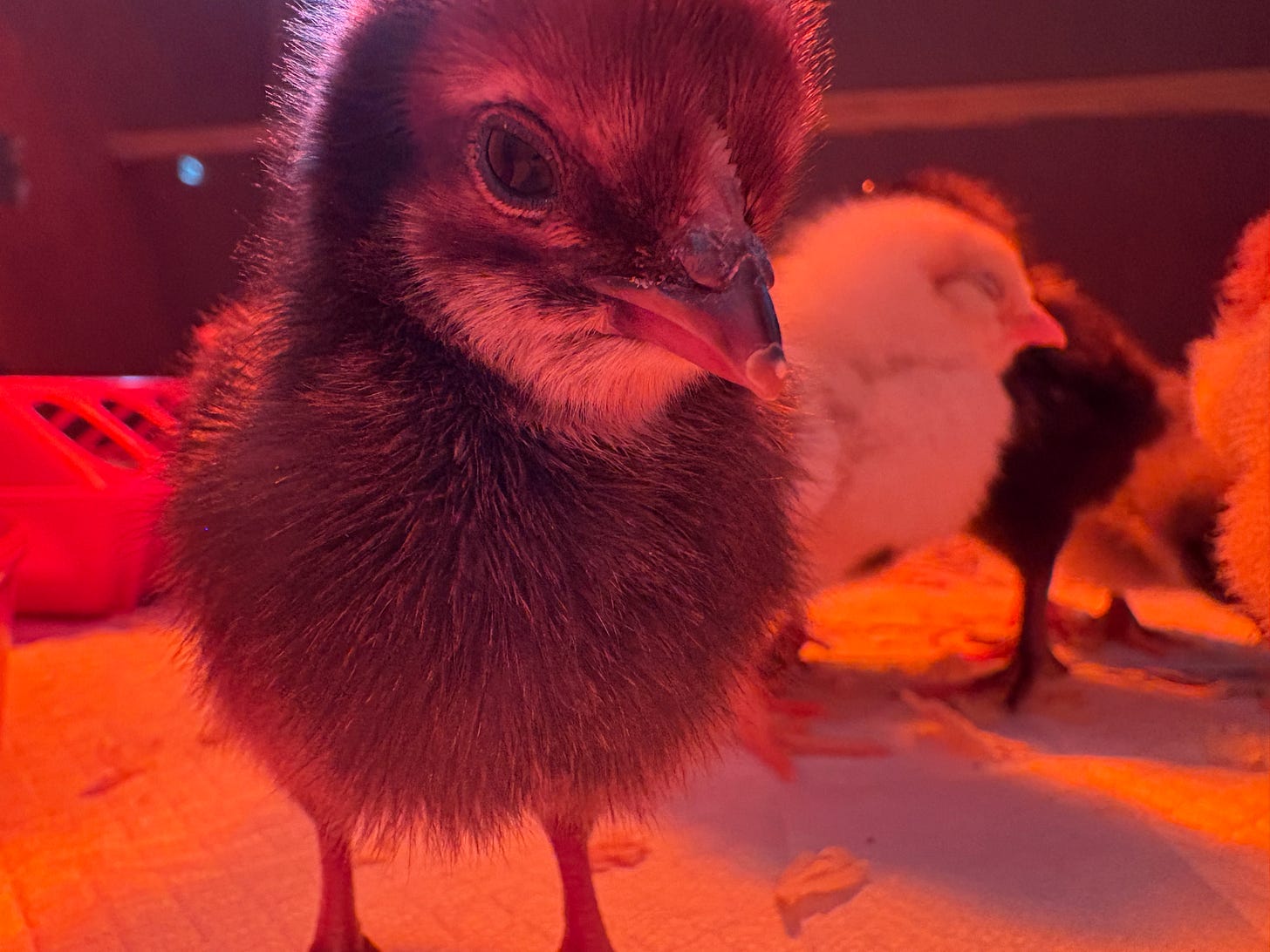

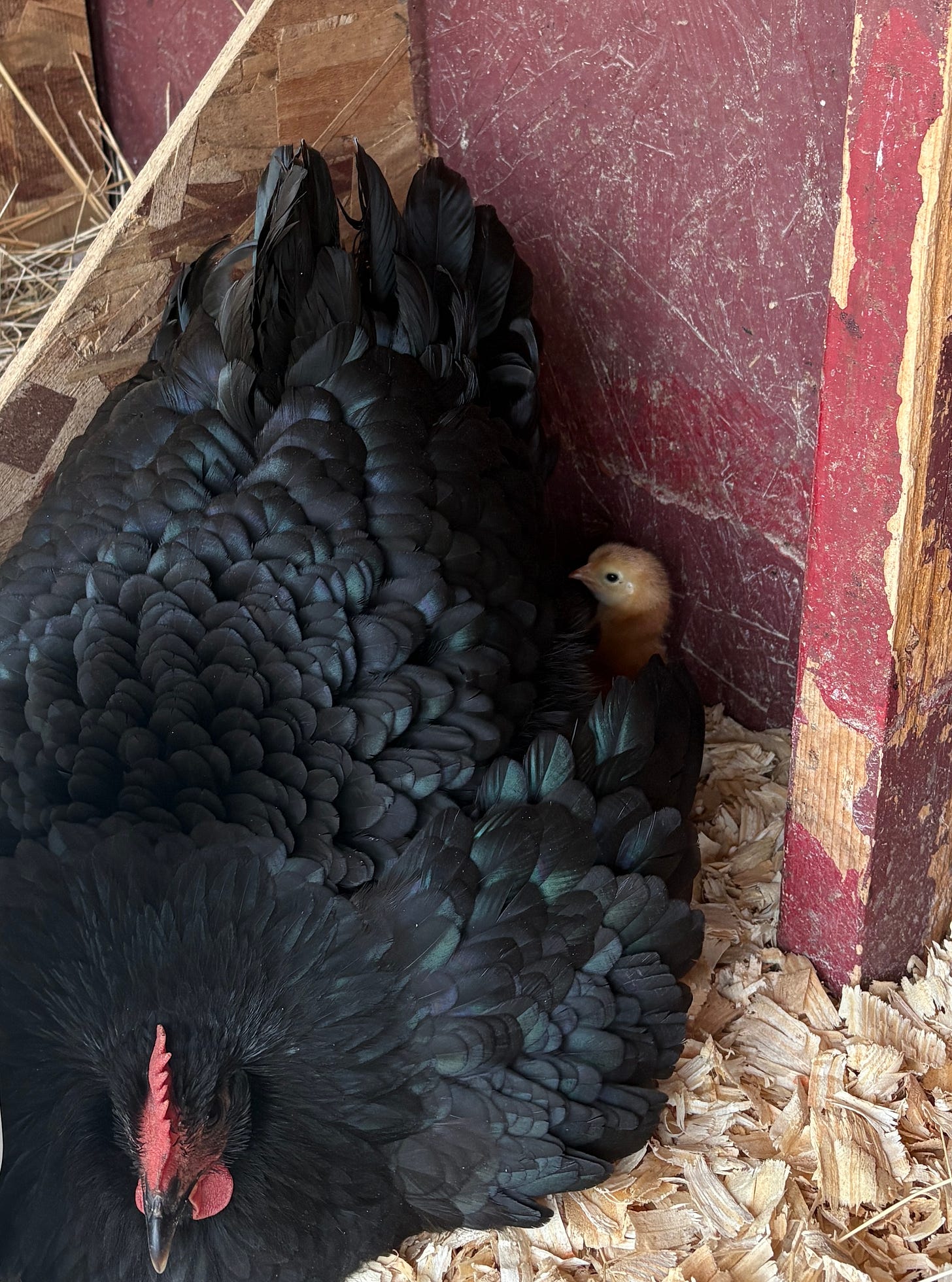

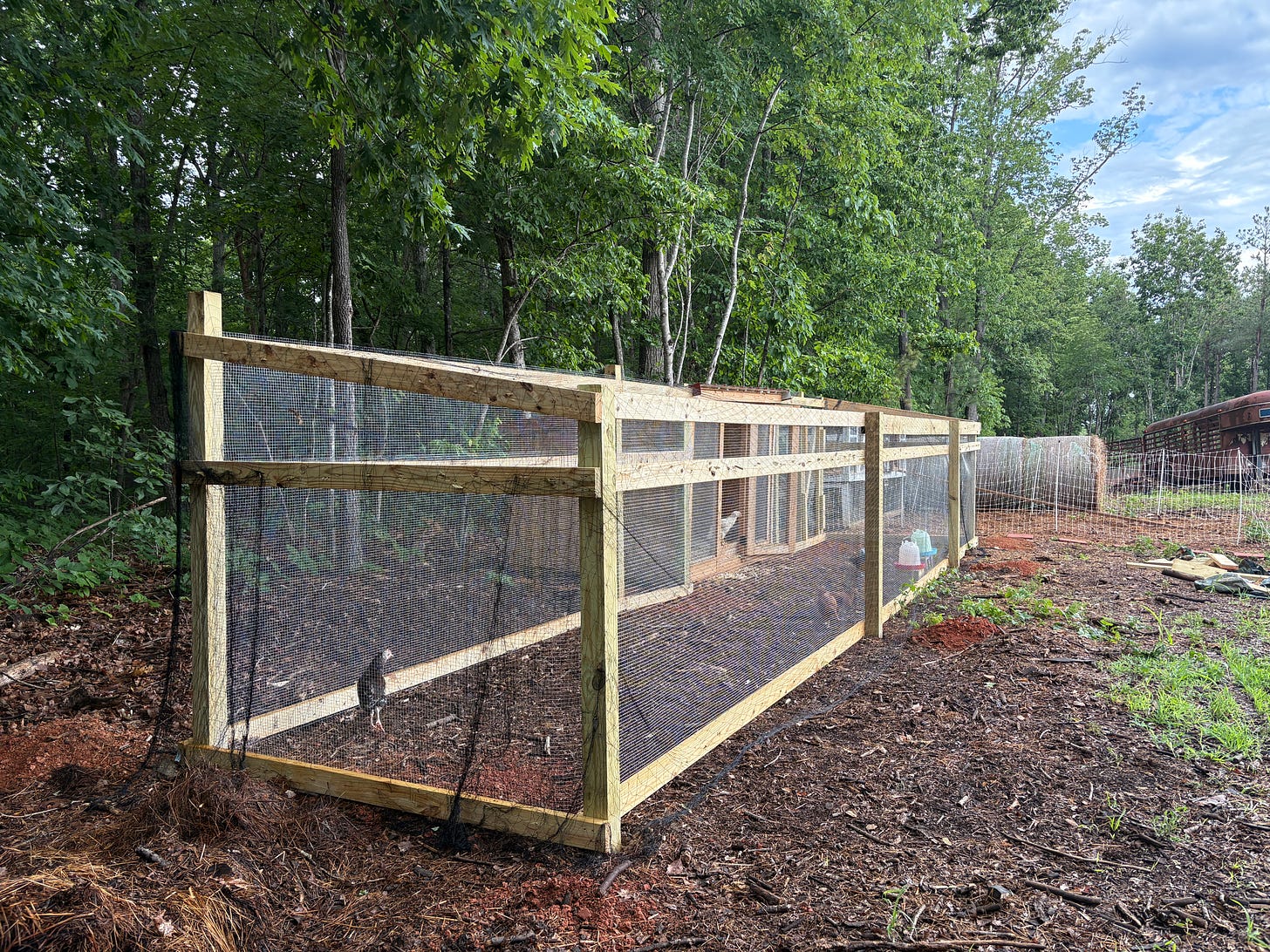
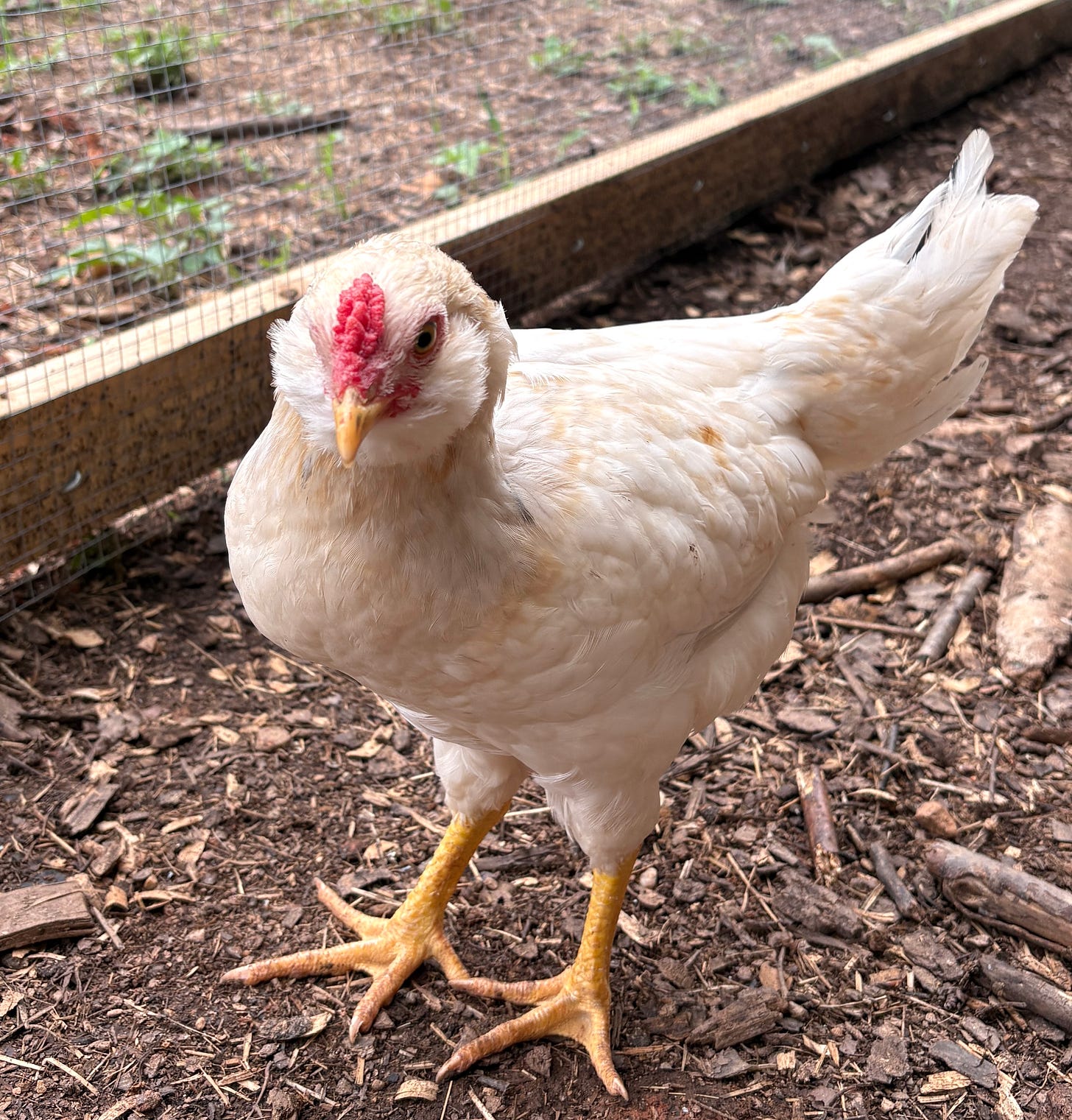
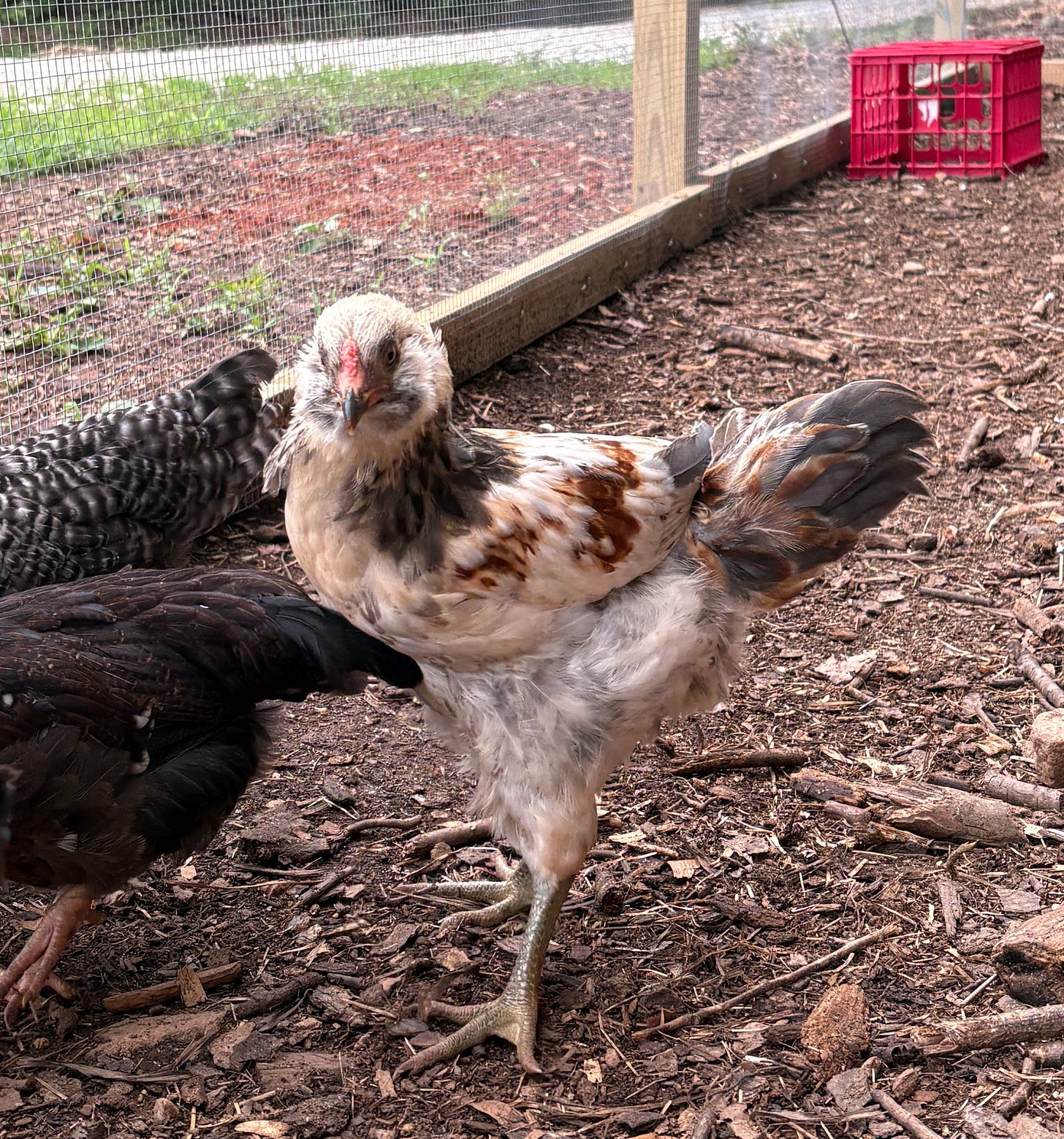




Almost forgot! Do chicken sexers and weather men travel in the same circles?
Hilarious 😂